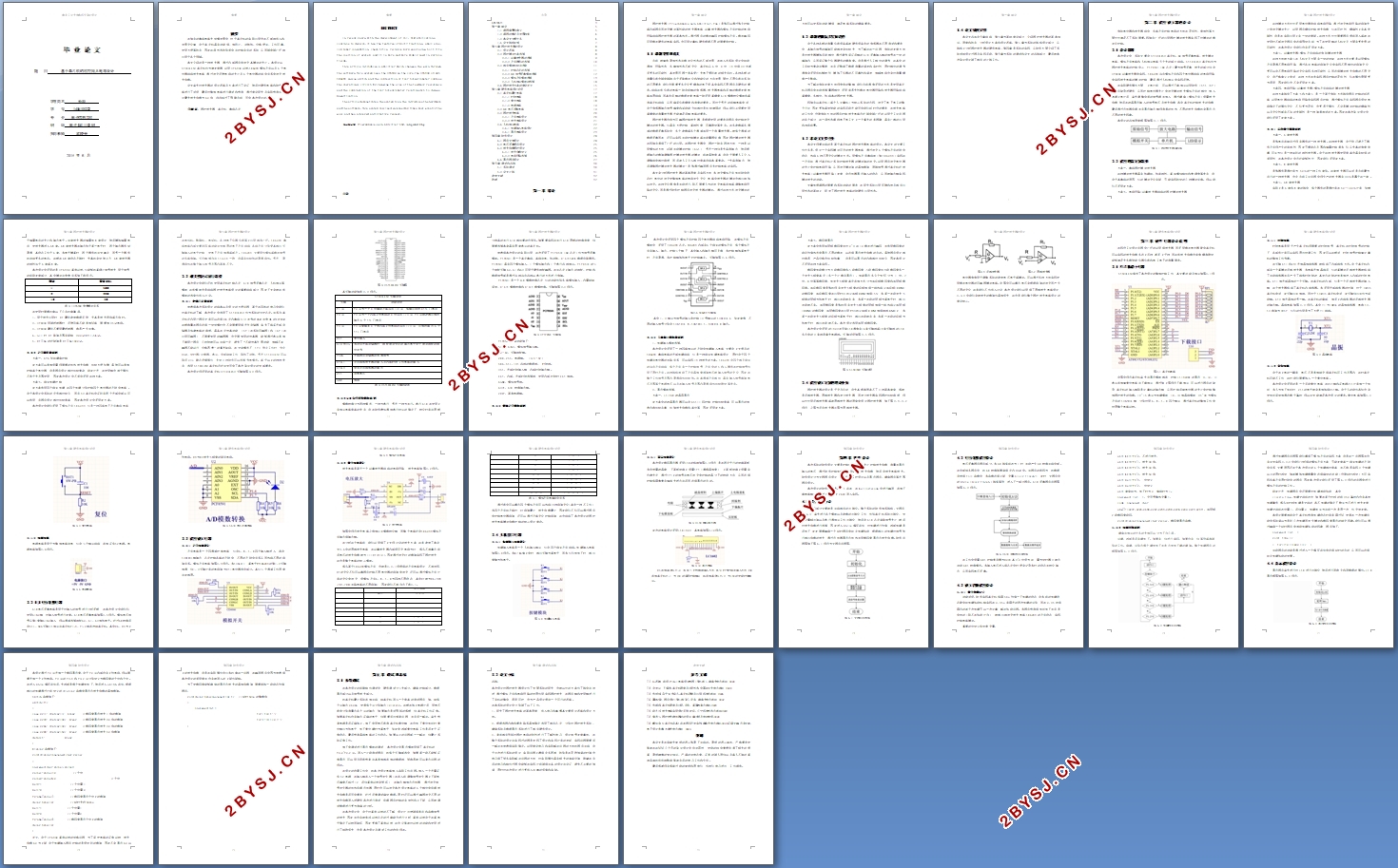基于单片机的程控放大电路设计
无需注册登录,支付后按照提示操作即可获取该资料.
基于单片机的程控放大电路设计(开题报告,论文12000字)
摘要
在如今的集成电路大规模发展中,对于单片机的实际应用也在不断地深入和发展变化着,由于单片机具有功能强、体积小、功耗低、价格便宜、工作可靠、使用方便等特点,因此这项技术特别适合与控制有关的系统,从而越来越广泛地应用于各个领域。
本文介绍的是一种放大器,通过内部程序来改变其增益的大小。本设计以STC89LE52单片机作为微处理器,运用OPA690运放,CD4066模拟开关以及4个电位器组成放大电路,通过改变反馈电阻的大小及4个电位器的组合关系来改变放大倍数。
论文首先对放大器的设计思路及方案进行了论证,然后对硬件电路和软件电路进行了说明,最后对整体电路进行调试和检测,通过理论研究及实际检测该设计最大放大倍数为40倍,远远超过了预期目标,符合本次设计的要求。
关键词:程控放大器,单片机,集成芯片
ABSTRACT
In recent years,with the development of LSI, SCM applications continue to develop.It has the features of multi-functions, small size, low power consumption, cheap price, reliable work,eazy using.So it fits the coercion of system,and it is more and more widely used in various fields.
This article introduces a amplifier which changes the gain through the software.This system uses the OPA690 as the core.The OPA690 op-amp, CD4066 analog switch and the composition of four potentiometer compose the operational circuit.By changing the size of the feedback resistance and the combination of the four potentiometer relationship to change magnification
The article demonstrates the system plan,the introduces the hardware and the software.This system realized enlarged 40 times most greatly the goal and has achieved anticipative request.
Keyword: Programmable,Gain Amplifier;SCM,Integrated Chip

目录
ABSTRACT 3
第一章 绪论 5
1.1 课题背景和意义 5
1.2 课题的概况及发展趋势 6
1.3 本论文主要任务 6
1.4 论文结构安排 7
第二章 程控放大器的设计 8
2.1 设计思路 8
2.2 程控增益方案选择 8
2.2.1 运算放大器的选择 9
2.2.2 开关器件的选择 10
2.3 相关模块比较与选型 11
2.3.1 控制芯片的选择 11
2.3.2 A\D信号采集模块选择 12
2.3.3 模拟开关模块选择 13
2.3.3 人机接口模块的选择 14
2.4 程控放大方案的理论补充 15
第三章 硬件电路设计说明 17
3.1 单片机最小电路 17
3.1.1 时钟电路 18
3.1.2 复位电路 18
3.1.3 电源电路 19
3.2 A\D电压采集电路 19
3.3 程控放大电路 20
3.3.1 开关电路设计 20
3.3.2 放大电路设计 21
3.4 人机接口电路 22
3.4.1 按键输入电路设计 22
3.4.1 显示电路设计 23
第四章 软件设计 24
4.1 程序主体设计 24
4.2 电压采集程序设计 25
4.3 放大倍数程控设计 25
4.3.1 放大倍数定义 25
4.3.2 电阻网络选择 26
4.4 显示程序设计 27
第五章 调试和总结 30
5.1 系统调试 30
5.2 论文小结 31
参考文献 32
致谢 32
